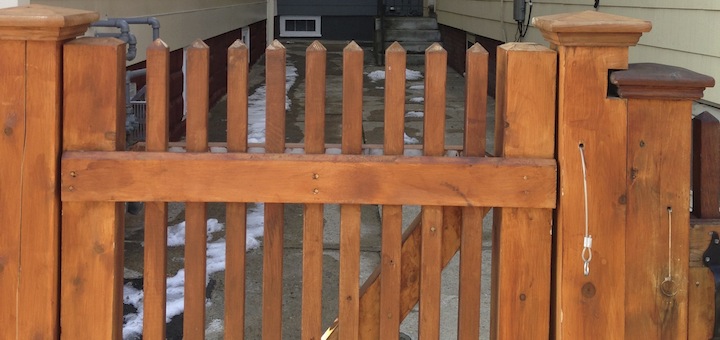Inflation is here: it’s large, it’s in charge, it’s up 8.5% as of March 2022, which is the biggest 12-month increase since 1981. Woohoo! Aren’t we lucky! But all is not (totally) lost because inflation doesn’t impact all prices equally. As we’ll explore together today, this is an uneven inflationary period: almost everything is more expensive, but some things are hit harder than others.
What Exactly IS Inflation???!!!

Before we dive into how inflation affects us on an individual level, let’s spend some time in Liz’s Definition Corner. Inflation is one of those terms everyone thinks they should know and assumes everyone else knows, but in reality a lot of us are not sure but afraid to ask because we assume everyone else knows…
I kind of knew what inflation was before this year–like in very general terms–but now I’m deeply curious about what it really is. So let’s bust out some hotttt defs on this baby.
According to this article in the New York Times:
Inflation is a loss of purchasing power over time: It means your dollar will not go as far tomorrow as it did today.
I like this definition–very simple, very easy to see how it applies to our lives. Stuff costs more but most of us still have the same amount of money to spend, which means we can afford less stuff. It’s not great, people, not great.
What causes inflation? The NYT illuminates:
In the short term, high inflation can be the result of a hot economy — one in which people have a lot of surplus cash or are accessing a lot of credit and want to spend. If consumers are buying goods and services eagerly enough, businesses may need to raise prices because they lack adequate supply.
But inflation can — and often does — rise and fall based on developments that have little to do with economic conditions. Limited oil production can make gas expensive. Supply chain problems can keep goods in short supply, pushing up prices.

Ring any bells???? The pandemic, the disruption to the global supply chain, the war in Ukraine and the resulting increase in oil prices–we kind of hit a perfect storm here for inflation.
It’s also partly our fault because:
…consumers, who collectively built up big savings thanks to months in lockdown and repeated government stimulus checks, are spending robustly and their demand is driving part of inflation.
In addition to pandemic stimulus checks, the pause on student loan payments gave a lot of folks a lot more money to spend.
I also appreciate the European Central Bank’s straightforward definition:
In a market economy, prices for goods and services can always change. Some prices rise; some prices fall. Inflation occurs if there is a broad increase in the prices of goods and services, not just of individual items; it means, you can buy less for €1 today than you could yesterday. In other words, inflation reduces the value of the currency over time.
Ok, now that we understand the basics of what inflation is and what causes it, let’s discuss what we can do about it!
Where is Inflation Headed?

No one knows. We don’t know if things will go back to normal (if this is “transitory inflation”) or if we’ll end up in an inflationary spiral where it just keeps going up and up and up. Given these polar opposite possibilities, everything I’ve written today could be TERRIBLE advice or FANTASTIC advice.
Here’s why:
- If things snap back to normal: it will have been very wise to delay purchases and I will look like a genius.
- If inflation continues to increase on a runaway train trajectory: it would have been very wise to instead buy a bunch of stuff before prices increased and I will look like an idiot.
No one knows what will happen, certainly not me. But I will say this: it’s not going to hurt to look for opportunities to save more money. Having money saved up isn’t going to hinder you in the future. And if you must make a major purchase right now–such as a house or car–perhaps you’re getting a great deal (if inflation continues to rise). Or perhaps you’re way overpaying (if this is transitory inflation). But again, no one knows! So, best not to panic.
Control What You Can Control
You, me and our moms cannot control the economy. We cannot single-handedly fix inflation and there’s no ‘one weird trick’ for surviving an inflationary period. Given all that, don’t panic.

What we can do is be cognizant about which goods and services are increasing in price and how we might create household budgets that nimbly respond to the most egregious price hikes.
Since inflation impacts every sector of the economy, one strategy is to delay purchases and avoid buying non-necessities. This is always a good strategy if you’re trying to be uber frugal, but it’s even more true if you want to shield yourself from inflationary shrapnel.
If you haven’t taken my free, 31-day Uber Frugal Month Challenge, now’s a great time to do so and to identify what you can stop or delay buying. Again, this approach makes sense if you think this inflation won’t last forever. It’s a terrible approach if you think inflation will increase forever and ever.
Can you stop or delay buying small things like:
- Clothing
- Household decor and supplies
- Small appliances
- Large appliances too, come to think of it
- Toys, games, books
- I ran out of examples, but you get the idea.
Can you delay buying big things like:
- Cars
- Houses

The idea here is to temporarily reduce your spending in discretionary areas. This helps not just you but also the economy because inflation is basically too many dollars chasing too few goods.
Of course sometimes you absolutely cannot avoid buying–if you’ve been putting off buying a car for years and you have to buy one now? You gotta do what you gotta do. If you’re in the middle of a kitchen renovation and have to buy a refrigerator? You gotta do what you gotta do. But if you have flexibility, if you don’t have to have something right away, delaying that purchase might be wise.
Discretionary spending fits firmly into the category of controlling what we can control. Most of us don’t NEED a new purse or pair of shoes immediately. Most of us can delay some of our purchases. We can wait and see what happens while we allocate our money towards the things we cannot delay buying, such as food, childcare, medicine, etc.
Re-Evaluate Pandemic Spending Habits
Many of us changed our spending habits during the pandemic in order to cope with quarantines, stay-at-home mandates, remote work/school, the impending apocalypse, etc. And while the pandemic is by no means over, we’re in a different phase. Most of us are back to some semblance of our before-times routine or we’ve settled into our new normal. In light of that, take time to re-evaluate some of the spending habits picked up during The Dark Years.

Things like:
- Restaurant take-out and delivery.
- Grocery delivery services.
- Shipping fees to avoid in-store shopping.
- Streaming services: TV, music, movies, gaming.
- Monthly subscription services: cheese of the month club, wine of the month club, ballpoint pen of the month club, magazines, work-out apps, box-o-stuff subscriptions, meal prep boxes.
- Cool stuff for the house we were stuck inside: gym equipment, indoor bouncy houses, home decor.
- Treat yourself treats: home manicure kits, home cocktail-making kits, aromatherapy candles, custom dental floss, miniature knit sweaters for corgis.
If you’ve gotten into the habit of routinely ordering/paying for/subscribing to these services, take a moment to re-evaluate and consider if you can scale these back in order to make more room in your budget for the stuff you can’t eliminate. Whether inflation snaps back or increases, re-evaluating your spending is always a solid exercise (of course, I would say that).
The Stuff You Can’t Eliminate
- Groceries
- Transportation
- Utilities
- Housing

1) Groceries
Food offers us the most flexibility for spending less because inflation’s not hitting all foods equally.
According to the Consumer Price Index:
- Beef increased 16%
- Meat, poultry, fish and eggs increased by 13.7%
- Fruits and vegetables rose 3.2% (in February, 1.5% in March)
I love a burger as much as anyone, but I’m not buying beef right now. You can shelter yourself from the most egregious blows by simply not buying the thing. We’ve transitioned to a more heavily vegetarian diet the past few months to avoid these higher meat, chicken, fish and beef prices. If you’re able to change your eating habits for the short-term, that’s one of the easiest ways to ease your spending. Plus, doing this shook up our meal rotation and we’ve enjoyed making some new recipes.
As always, the frugal maxims of cheap-n-healthy eating apply:
- Avoid packaged, prepared, and pre-made foods
- Reduce your meat and dairy consumption
- Buy bulk, raw ingredients:
- We recently bought 50lbs of organic whole wheat flour (for baking bread), 50lbs of organic oats (for making oatmeal) and 50lbs of dried chickpeas (for making hummus and roasted chickpeas) and the prices were similar to what they were last year.
- Cook from scratch as much as your schedule and health will allow:
- Now’s a great time to go see if there’s a bread machine, pressure cooker, Instapot, or crockpot for sale at the thrift store!
- Now’s a great time to start cooking with dried beans!
- Now’s a great time to start baking your own bread and desserts!
- Not everyone’s schedule or health will allow them to do this, but if you can do one or all of these things, go for it!
- Here’s my full write-up if you want more ideas: Our Complete Guide To Frugal, Healthy Eating

Side note: I know some folks have food allergies/specific health-related reasons for eating/not eating certain foods and I’m not implying anyone should eat things that are dangerous/inaccessible to them, so don’t come after me!
Restaurant dining is up 8%, which is yet another reason to focus on meals-at-home. We’ve been eating out less the last few months, which I desperately miss, but I also know that right now I want to buckle down and spend less.
2) Transportation
For many of us, there’s not a whole lot we can do in this category, which is why I highlighted the potential changes to groceries. If you can drive less, do it. If you can work from home more often, do it. If you can carpool or utilize public transportation, do it. If you must buy a car, focus on fuel efficiency, but I absolutely would NOT recommend buying a car just for that reason!
In fact, if you can avoid buying a car at all–used or new–that’d be ideal because:
- Used car prices are up an eye-watering 35.3%
- New vehicles are up 12.5%
Given that, don’t turn a $40 gas problem into a $40k new car problem. Again, I 100% get that sometimes, you can’t wait any longer to buy a car. But if you can wait–if buying a new car would be more ‘nice’ than ‘necessity’–wait it on out! Caveat yet again: maybe prices continue to increase and you should actually go out and buy ten cars today. Who could know!?
3) Utilities

If your state offers an energy audit, sign-up for one today! You might be able to reduce your energy costs OR there may be state-funded programs offering rebates/tax credits for things like installing a more efficient water heater, etc. Also check with your electric company to see if they offer any programs or rebates you can apply for.
An easy DIY route is to buy an energy monitor, which you can plug into your appliances to see what’s draining the most electricity (affiliate link).
4) Housing
Much like transportation, there’s not a whole lot most of us can do about where we live. If you can delay buying a new house, that’d be good, but sometimes you can’t. Sometimes you just gotta buy a house when you need a house. If you have stable housing, be really grateful for it!
Remember how I mentioned awhile back that it would be a good idea to check into refinancing your mortgage when interest rates were at historic lows? I hope you did so! For those of you with a fixed, low-interest rate mortgage, be VERY thankful for that rate. Having a fixed, low-interest rate mortgage can be a hedge against inflation because your mortgage is denominated in pre-inflation dollars while your salary is (hopefully) increasing due to inflation. Periods of inflation are one reason why I often advise folks (in the accumulation phase) NOT to pay off a fixed, low-interest rate mortgage.
Make Inflation Work for You
Employment

In addition to making adjustments to your spending, examine how you might be able to increase your income. We’re in a very interesting employment environment right now and:
Unemployment is historically low at 3.6%
What this means broadly: lots of employers are hiring and there aren’t many applicants for these jobs.
What this means for you: it’s probably an excellent time to:
- Ask for a raise from your current employer.
- Look for a higher paying job.
- Request more flexibility from your job in order to offset other costs (for example: more work-from-home days to avoid high gas prices and cook dried beans in your thrift store pressure cooker during your lunch break).
Interest Rates
Interest rates are up right now, which is not great for things like mortgage interest rates, but IS great for things like high-interest savings accounts. Review the interest rate on your checking/savings accounts and consider switching banks if you’re not earning a solid percentage.
It’s also a good idea to ensure you have a valid credit card strategy that’s reaping rewards you’ll actually use. Here’s my recent write-up on how to do this: How I Made $712.59 With My Cash Back Credit Card.
Flex Your Frugal Muscles

A period of inflation is a fantastic time to bust out your frugal skillz. I find that my frugality waxes and wanes over the years, as evidenced by my monthly expense reports. You may have noticed I’ve tamped down our household spending since the start of 2022.
You, like me, have probably honed your ability to save money over the years and now’s your chance to utilize those capabilities. I don’t see this as a forever thing. I see this as a ‘I’m going to mindfully spend a bit less while inflation runs around like a frat boy with a red solo cup of jungle juice.’
Summary:
- Don’t panic. No one ever makes good financial decisions when they’re panicking.
- Understand the difference between your fixed costs and your discretionary expenses.
- If you’d like help identifying those, take my free Uber Frugal Month Challenge.
- Look for ways to eliminate/delay/reduce your discretionary expenses.
- Explore ways to reduce your fixed costs.
- Understand which items are hit hardest by inflation and strategize ways to avoid buying those things (i.e. beef and used cars).
- Don’t pay off a fixed, low-interest rate mortgage.
- Ask for a raise or find a higher-paying job.
- Examine the interest rate on your savings/checking accounts to make sure you’re earning something.
- Have a credit card strategy that gives you rewards you’ll actually use.
- Use this time to flex/develop your frugal muscles.
- Know that no one knows what will happen and things could go back to normal or inflation could continue to rise.







Hi FWs,
So we’re in the category of “must buy a car at the worst time”. We’re having a child at the end of May, and she will need a car as I will still be driving to work. To mitigate this we thought a fuel efficient vehicle would be the best way to go. However the inventory is low to nonexistent around Boston and what’s there is marked up sometimes $7,000 compared to gas vehicles. So we’ve settled on a particular vehicle that is very reliable and has a steady resale value. The other factor I think has been lost in this mad dash for plug-in hybrids and electric vehicles during covid is battery degradation, and how that can depreciate the value of the car. I’d rather buy an electric car that I love later than one I’m not excited about now and can’t resell. So this way we can buy an electric car in a few years and not have to sweat it too much.
Thanks for all your insights today!
Chris–I think your assessment re. electric vehicles is spot on. And the focus on great resale value is also super smart. Sounds like you’ve made a great choice! Congrats on your baby 🙂
Thank you 🙂 it’s going to be an adventure!
I heard on NPR station that many states are now incentivizing electric car purchases and the charger that goes on your house.
It was like ~ 7k total…. Its part of a Biden infrastructure plan and some states are ahead of the game. Might do some scoping & hoping.
Yes, and watch out for dealers assuming it’s ok to add that much to their invoice price (what they buy the car for from the manufacturer).
EV: $7500* federal tax credit, $2500 state rebate
Plug-in hybrid: federal varies, $1500 state rebate
*Some manufacturers are partially or completely phased out
Federal tax credits: https://fueleconomy.gov/feg/taxevb.shtml
MA state rebates: https://mor-ev.org/
(Search for your state’s EV incentives)
We just bought an electric car (a Kia) and yes, there is that markup but we were able to negotiate it away. These are dealership specific and apparently Kia and other manufacturers are trying to discourage on this practice. We checked with the 4 Kia dealerships within a 20-ish mile radius, and got one of them to get rid of that markup. Then we actually reported what we encountered to Kia and the Kia customer service seemed to appreciated it. Battery degradation is another long rabbit hole but in general, if you typically keep the battery between 20-80% charged and rarely use a fast charging system, its pretty minimal. My sister has a 2014 Nissan Leaf and the battery is still operating at about 90-95% of capacity. Good luck with your process! Its for sure more difficult.
Yes, I just bought a hyundai Kona ev. Is this a great financial decision? Probably not, but there are a variety of reasons that I am. ANYWAY, I hunted around and found a decent one at a decent price (Western MA seems to have more inventory) and the battery is warranteed for 100,000 miles, though everything I read says Hyundais don’t degrade nearly as much as the earlier Leafs may have (though clearly not Laura’s sister’s!).
Hi curious what was the steady reliable car you went with? Looking for something cheaper, bullet proof and higher mpg! Thanks. Awesome talk and post!
Awesome negotiating! Thanks for explaining the battery improvements and charging strategy. I have renewed hope.
Higher mpg is hard to find right now, but Subaru Impreza hatchbacks have held their value well, typically selling for as much as a new one 2 or 3 years later. They’re bombproof, spacious, attractive, and comfy, not to mention AWD.
Awesome negotiating! Thanks for explaining the battery improvements and charging strategy. I have renewed hope.
Series I savings bonds are at 7.12%. This can be a nice place to put $10k if you are delaying a big purchase.
Thanks! Looking into this now.
I’ve been buying I bonds for over 20 years. Great place to put money especially now! Check out treasurydirect.gov for more info.
Wow! I will definitely dig into this more… THIS (i-bonds?) is something I’d love to see Frugalwoods write about.
I would highly recommend tipswatch.com for ibond info!
Thanks for spelling out basics on what is a complicated topic! the fed bank has teams of economists with PhD’s working on this. Sometimes, the rest of us need a good primer on the topic. The advice not to panic is also a great reminder. Thanks FWs!
We paid off our mortgage yesterday (wahooooooo!!!!!) and were thinking about where to go out for dinner to celebrate. After reading this we will be cooking at home. Little choices like that are how we reached this point, afterall.
On electric cars cars, I will say battery degradation was more of an issue with earlier models (2011). I have a 2018 Nissan Leaf and have not had this issue so far. Also range has improved a lot compared with earlier models. So grateful to have it right now!
Just wanted to pop in and say congrats M! Paying off a mortgage is a big deal!!
Thank you, Jackie! It is life-changing!
Thank you for including this information: In addition to pandemic stimulus checks, the pause on student loan payments gave a lot of folks a lot more money to spend.
I don’t think many people are aware of this and I do think it is a contributing factor to inflation, though I suspect supply chain issues, rising wages, and the war in Ukraine are large contributors. It’s such a complex issue.
We have been focused on getting “good” deals on food and veering towards less expensive foods that are still nutritious.
That huge tree in front of your house looks sooo much smaller when it is weighed down with snow
I love how it looks covered in snow! Looked like a completely different tree!
We’re feeling good that we got our paperwork for our loan in during the “historically low” period (we bought our new house with cash right as things were starting to go crazy mid-pandemic, but always planned on putting a little “mortgage” on it to free up some cash for improvements). But man, the inflation on lumber and building materials right now is ultra-painful. As an architect, I knew this from job sites (jobs are coming in at 50% more than they would have before) so we’re waiting for some of the most “material heavy” improvements (like reinsulating and recladding and new windows in the whole house) until the builders aren’t overbooked and the supply chains free up again. We’re concentrating on things we can do ourselves, things that are safety issues (like the falling-down access to the garage attic) and things that have an automatic savings incorporated in them (like the solar panels install) while I’m doing minor cosmetic things just to cheer myself up (like paint and a couple of new light fixtures). Waiting for the big stuff is our strategy.
On food – I also want to point out that local farm prices may not have changed much. The farm I buy from is organic and regenerative (ie, somewhat protected from the increased fertilizer costs) and their beef prices haven’t changed in the last year. I’m sure they will have to increase a little at some point, but they aren’t there yet. If anything, I feel even better about purchasing from them now – the prices are still higher than the grocery store, but the difference is less significant than it used to be!
Our meat and dairy CSA prices this year were the same as 2021. We had enough meat from last year to hold us over until it starts this spring.
Please do tell where you sourced those bulk organic oats!
We order them from the bulk foods department of our local co-op (of which we’re members). Definitely worth asking your local stores if they offer something similar!
The NYT “definition” of inflation and your sentence following it actually conflate two separate issues: a change in prices and a change in purchasing power. The ECB definition of inflation is the correct one: inflation is an increase in the overall price level as measured by some price index (the Consumer Price Index is the one most often discussed in the US media). It’s a decrease in the purchasing power of a unit of currency. Full stop. In casual conversation (or media stories) “purchasing power” usually means the purchasing power of *income* (aka “real income”), not a unit of currency. You can have inflation without a decrease in the purchasing power of your income if your wages or other income are rising equal to or faster than the price level (in this case real income stays unchanged or increases). In fact, that’s what we saw during the beginning of the pandemic. Now it usually is the case that incomes adjust more slowly than the price level, so higher than average inflation will lead to a decrease in real income, and that’s what we’re seeing at the moment in the US. But that’s not always true when you have inflation, and in fact real wages in the US are about the same as they were pre-pandemic, but they’re decreasing.
Sorry to be pedantic, but as an economics professor I have to explain this to my students every semester.
Very interesting. Thanks!
Thank you so much for this clarification, Stephen! Most appreciated!
This is so so timely Liz! I sent this around to all my family. Thank you so much!
My pleasure! I’m so glad you find it helpful 🙂
Having survived the inflationary period of decades ago, when my spouse and I couldn’t afford a house because interest rates were anywhere from 12 – 17% and staples and gas went through the roof, I can attest that those who had a lot of investments that provided them with interest and dividends did fine and those living more paycheck to paycheck did very poorly. A lot of hard choices had to be made, as raises at work were not keeping up with raises in prices.
It’s correct that we can’t know how long this will go on. Anyone who has a working crystal ball, please speak up and let us know what’s next! I tend to go with Mrs. FG’s advice: for now, if you don’t have to have it, don’t buy it. For things you simply must have, buy as frugally and use as carefully as you can. Even thrift store prices have increased, so check places like buy nothing groups if you can. Waste nothing. Batch cook on a weekend, hang up clothes to dry, skip a day between showers if you can, see how much less soap/shampoo/dish detergent/shaving cream you can use and still do the job, catch tap water in a bowl or bucket as you wait for it to warm up and use it to water plants, flush the toilet, or water a pet. Give yourself a challenge every day to save money somehow.
I am buying most of my meat from local farmers. If you can find someone selling whole, half or quarter animals, check their prices. You should also check for any additional butchering fees from a processor – those fees may or may not be included in the per pound price, so be sure to ask. There are still some really good deals when buying direct from a family farm.
You are so spot on! Our first house was 10%, next one was 12.5%; I was so happy to re-finance at 9% as I recall. I save that water for warming up, as you suggested; I figure I probably save at least 1500 gallons per year. You don’t have to shower every day; a bird bath will do. Cook your own beans, chickpeas, and lentils. Batch cook rice. Grow your own greens; if you don’t have space, do them in window boxes. They grow fast and you can succession plant to keep them coming.
Excellent Post!
Are you 100% sure my mom can’t control inflation?
LOL- pretty sure
Best comment ever
To save on transportation costs, for those with short (under 6 mile) commutes, look into bike commuting! Or consider biking to/from public transportation.
I’ve just found out how much my energy bill will be going up by, and it’s really scary stuff.
Which would you guys choose: fixed for two years at £200 per month (with higher unit rates), or variable at estimated £140 per month (with lower unit rates, but of course will change with the market)?
And, yes, I’ve already compared suppliers and this is the best I can get.
Personally I’d go for fixed. We are also in the UK and my feeling is that the price cap will only be raised again later this year.
It’s very alarming!
Ours has gone utterly mental here (UK) – from £160/month to £650/month! That includes charging two EVs so we don’t have fuel costs, but it’s still an outrageous hike.
Check your local library. Ours offers energy monitors to check out.
Custom dental floss!!! Love it! Thanks for the much needed laugh this morning.
My hair stylist raised prices by 25% during the pandemic since she needed to spread out the appointments due to government regulations. This was completely understandable. Now my stylist is able to go back to “business as usual,” but she has not lowered her prices. It is time to start calling around and see what others are charging.
I have noticed this price gouging also. Certain companies cashing in on the current climate even though it is unnecessary. My local pet store has a self dog wash. When they opened -it was 12$ to wash your dog in the tub with water and soap. This month it was 20$.
Like a frat boy with a red solo cup of jungle juice absolutely needs to be a T-shirt!! You could make a fortune. I’d buy several 😉
HAH! That’s just what immediately pops into my mind when I think about inflation 😉
Can you explain number 7 a bit? What about paying more into a mortgage, not paying it off completely? Hold off, and why?
If your mortgage is at a fixed 2% (for example) and inflation is around 7%, then your entire mortgage balance is essentially shrinking by 5% each year. You are better off putting your money elsewhere until inflation comes down to a more normal level
Thanks for this Anne!
Thank you Anne! I needed thatclarification as well!
And as with any news stories, especially financials, curate carefully how much you read. Read enough to empower, not to depress, recognize which sources are just being inflammatory, and know that things take time.
To help with fuel prices we plan ahead. Safeway gives 2x rewards on gift cards purchases and we can redeem those rewards for cash off per gallon at the Safeway gas station in town which also happens to be lowest priced before discounts. Spend $500 on gift cards, get $1.00 off per gallon. (Spend less, get a smaller discount but still $ off!) We buy gift cards for everything we are going to buy anyway – NOT just for the sake of buying gift cards! This week and next week I’ll buy Southwest gift cards for flights we need to purchase. The weeks after Home Depot gift cards towards a garden shed, etc. This way we get the credit card points for buying the gift cards, then save at the pump. We calculated that, with our rate of driving, this planning ahead will save us more than $800 on gas this year.
We buy our gift cards at Krogers. Sometimes they are 4x the fuel points. If not they are 2x the points. We also have the Kroger credit card. We’ve had it awhile. If you spend a certain amount a year they give you an extra 25 cents off a gallon. We pay it in full every month. If we use 100 points for 10 cents off, we now get 35 cents off a gallon. It has saved us alot of money. We’ve needed some big purchases from Tractor Supply and AutoZone this year and have saved a small fortune on gas and diesel.
But Liz my Corgi has become accustomed to a knit sweater!!!! 😀 😀 😀
Photo evidence will be required of this 😉
Another reason I don’t eat meat 🙂 Nice post! And in the spirit of grocery talk, Happy National Banana Day everyone!
We have about 8 months to having our house paid off! Then we have to remodel. The hardest thing is going to be not taking out a loan to remodel. We are debt free besides the house and one tiny loan. We have the mindset to only have one tiny loan at a time which is probably not a good mindset. Thank you for this article. It is pushing me towards more not having any loans at all! I have a lot of dietary restrictions like I can’t eat dairy so we do eat alot of meat. I do meal plan but it stresses me out. We go to Aldi first to save money, then Walmart, and last Sam’s for toilet paper because it is cheaper. Do you have any post on meal planning? It takes me about three hours going through the sale flyers and my price book to make sure we are getting the best deals! I am sure eventually I will remember which store is cheaper and not have to look. Some days I just want to shop at Walmart and my local grocery store even though I know I need to get some things at Aldi. I heard Aldi is going up in prices too so I may have to shop just two stores eventually. I don’t understand why it takes me so long to make a grocery list and menu plan. It does help me to not go to the store but every two weeks. Any help from anyone would be appreciated!
I would take a look a look at how much you’re saving and is it worth the effort. I’ve got to the stage now where there is definitely a compromise between sourcing the absolute cheapest option and my time and mental load…
Yes! I read a personal finance blog post years ago that put that into words for me, the need to “shield ourselves from shopping energy and consumerist pressure”. Doing that can lead to spending less than when we put too much effort into chasing the very best deals. Find the balance that works for you.
https://ournextlife.com/2017/06/07/saving-means-spending/
Agree completely. I used to do this and it was a huge time sink chasing decreasing, if any, returns. The pandemic mentality (get in, get out, minimize shopping) helped cure me. I do shop at 3 different stores, but only 1 each week and make do if necessary until it’s time to circle back.
I also take a while to grocery list and meal plan but with practice I’ve gotten a lot faster. First, see the comments below and decide how much it is worth it to you to spend the time on the sale flyers etc maybe you can cut some of that out. Second, I keep a record of the meals I plan so I can refer back to it when I need ideas (I jot down the dinners for each week on a piece of scrap paper then stuff them in a drawer to collect for a few months until I log them into my Google docs spreadsheet). Now that I’ve been at it a few years, this spreadsheet is full of go to ideas for me to use. Third, I have some loose formulas, based off the meat or non meat and two veggie sides to go with them. I’ll start planning usually with one idea like “I want soup next week” so I pick a soup (ex. Pumpkin) it has no meat so I know I’m going to bake a filling biscuit as a side (we eat mostly Paleo btw so this is my go to almond flour biscuit), and we have salad greens leftover to use up so I plan a small side salad as a second side. That whole thought process takes me just a minute. Then I go from there. Usually we eat chicken at least once a week, what kind of chicken should we have next week? Let’s do shredded bbq chicken in the crockpot,a family favorite we haven’t had for a few weeks. I always serve that on baked sweet potatoes, so that’s one “veggie side” taken care of, and then I could pick a second vegetable to roast in the oven while the sweet potatoes bake, or I know I often make a simple sauteed spinach dish from frozen with this meal so I pick one of those options. Then I know I have leftover shredded bbq chicken to work with for another meal because I always do with that recipe so I plan another go to meal with that, a one pot skillet dish that doesn’t need sides. Now I have one vegetarian dinner and two chicken dinners so I will pick something with beef. Maybe one of our go tos again, taco salad, doesn’t need sides. And now I want at least one seafood dinner, I’ll go with frozen salmon fillets cooked on the grill and put them on a giant salad with homemade dressing. Another go to. Then there is one night a week we always do pizza 🙂 and one night when we might do something super fast like hot dogs and frozen veggies because of an evening commitment, and that’s my week’s meal planning done! I often take longer if I’m searching for a new idea or whatever, but I can also make my plan and write out the grocery list in 15 minutes on a good week. I will check the Aldi flyer when it comes in the mail and make a note if there’s an item on sale that I want to incorporate in the upcoming meal plan but it’s a one minute scan through. I do have a few other items I can’t get at Aldi that I order from Amazon subscribe and save ,or go to a local store that is generally lower priced to pick up every few weeks – but I never check their sales. For me having a shopping list based off of a meal plan that suits my families needs and tastes saves more money (and time) than aggressively chasing deals and prices. Hope this is helpful!
Do you also suffer ‘ shrinkflation’ ? Here in Europe this happens a lot. Same package, less content. so 400 grams instead of 500 grams. Same price. 800 cl instead of 1 liter. But same price sometimes a bit higher even.
We have certainly tightened out purse strings in the grocery department! I also am not buying beef aside from a bulk buy of ground beef at Costco every month.I just can’t justify eating more meat at these prices. We are also enjoying more beans, lentils, vegetables, rice etc. Eating out is down to one a week. For our family of 5 even to eat at McDonalds let’s say is hovering around $50 or anywhere really. Insane for terrible quality food!
We watch for Arby’s and Burger King family pack coupons. Arby’s has a $12 meal for two sandwiches, four sliders, and four small fries. You can actually order more than one per visit with the same coupon. We have four boys nine and under and this is just enough for us. But even getting two would be less than $50. We never order pop at restaurants.
I try to frequent the more ethnic food places: Jamaican, Puerto Rican, Chinese, Korean, & etc. as much as possible when I order takeout because they give you more for your money.
Last June, we needed car and no good used ones available. We paid cash for Rav Prime plug in (40 miles per charge/then 38 mpg) . $2K markup over sticker!!, but here in CA was going for as much as $10K over sticker. We bought it anyway. After $8K state/fed tax credit, price was about the same as hybrid. We have cheap electricity for electric cars (this is key consideration). We mostly drive locally, but also go on long trips once or twice a month. We now have 12K on car. In past year, have barely noticed change in electric bill and only filled up with gas an average of once a month. I would buy again. And we have been contacted by multiple dealers offering to buy for several thousand more than we paid. I’m sure that will fall off, but happy so far.
I have mentioned this in the Facebook group, but for those who have it near them Flashfood can be amazing. I have been getting a weekly large box of fruit (mainly apples/citrus, but sometimes mangoes, last week a papaya, etc) for $5 as they near “expiration” — but most seem really fresh. I also have been able to get half price fish – last week got a large Salmon fillet for $6 that made up most of a dinner and tasted as good as going out to eat. They often have eggs where one is broken so you get 11 at half the price of a dozen… etc. etc. And it feels good to keep this all out of a landfill!
Any suggestions for a high interest online savings account?
Marcus by Goldman Sachs
Can you ask her if the price increase is permanent? Sometimes it can be really hard to leave a stylist when they know your hair!
Check restaurant supply stores for great prices on food. A lot of the cost of food is the packaging, so restaurant-size packages save you money.
I’ve been doing very well so far with groceries, reading the weekly fliers, stocking up on clearance and sale items we regularly use instead of buying items when we need them(and paying full price!). We’ve done a lot to lower our monthly bills but energy/gasoline has been a doozy especially with my hubby going to the office 2x a week. Holding off getting a new car until we absolutely need to. Our cars are in great shape and we do regular maintenance, so hopefully we’ll be able to drive them a few more years. I’ll look into those bonds, the yields are enticing.
Do you also suffer ‘ shrinkflation’ ? Here in Europe this happens a lot. Same package, less content. so 400 grams instead of 500 grams. Same price. 800 cl instead of 1 liter. But same price sometimes a bit higher even.
I noticed our usage of natural gas was up versus this time last year and we have been using the dryer more. Increased usage tied to higher fuel prices equals a nasty utility bill. I forked over $37 for an Amazon drying rack for our basement (backyard doesn’t work for us) to use for smaller things and I noticed a precipitous drop in our utility bill thanks to warmer climate and significantly less gas dryer use. Little things like this can make a difference for the wallet.
Hi Liz,
Big fan of the “Control What You Can Control” mindset! Always makes me think of the “circle of control vs concern” content from the classic “The 7 Habits of Highly Effective People”. I also really like the comment about helping the economy overall – not too often you hear that about frugality!
A nice personal example of making things last longer right now: our fridge is 10 years old now (so elderly apparently) and the front panel is starting to fail. Easy to fix, right? Except the part can’t be found anywhere. Bleh! But as long as we don’t press any buttons (like for ice), it works like a champ. So I wrote a big note in my best handwriting (which is still not great) on a super sticky note: “Don’t Use Panel!” A nice frugal badge of honor when guests come over.
Today’s NYT has a personal inflation-impact quiz that will calculate an individual’s rate of inflation based on a few questions: https://www.nytimes.com/interactive/2022/05/08/business/economy/inflation-calculator.html
Mine is rated here as 7.4%